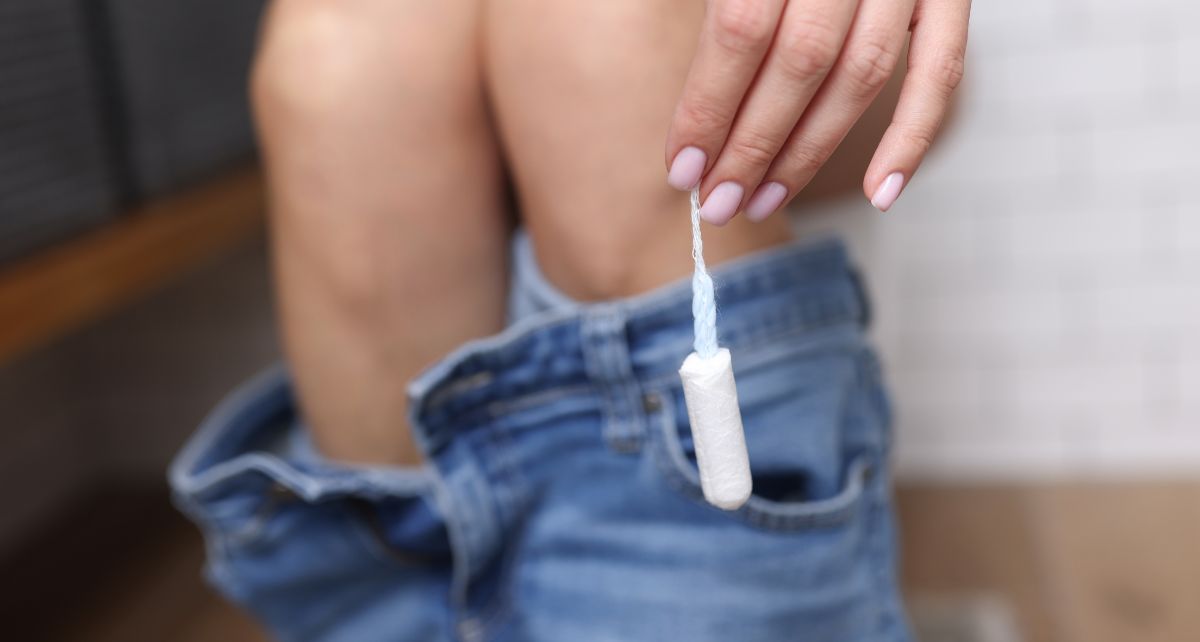Are menstrual equity and period poverty the same thing? While menstrual equity is often interchanged with period poverty, menstrual equity is an intersectional issue that encompasses both period poverty and the broader systemic inequalities that affect individuals who menstruate. It’s a crucial component of gender equity and reproductive justice, and it demands our attention and action. Let’s unpack more details.
What is Period Poverty?

Period poverty refers specifically to the inability to afford or access menstrual products and disproportionately affects those with a low income or experiencing homelessness. It’s a vicious cycle because when people can’t afford period care, it leads to missed work and school days, further perpetuating systemic inequalities. It’s a social issue that also leads to health issues. When disposable products are used for too long, or materials (like socks) are used that create a moist environment, it can cause irritation and bacterial build up which can lead to infection.
What is Menstrual Equity?
In addition to period poverty, there are many barriers that those who menstruate face—all because of a biological function.
Period stigma: Menstruation is still stigmatized around the world, leading to shame, silence, and secrecy. Even simply hiding a tampon up your sleeve on your way to the washroom is an everyday example of this. For menstruators, this makes it difficult to ask for help. And while we’re seeing change, menstrual stigmas make it difficult to address period poverty and menstrual inequity within workplaces and at the governmental legislative level.
Inadequate education: Lack of education about menstruation goes hand in hand with period stigmas. It’s a catch-22 situation where period stigma can be dispelled through education but that education isn’t happening because of stigma! It’s one reason why unbiased reproductive health education is so important within the school system.
Tampon tax: While tax on period care products was removed by the Canadian federal government in 2015, many states in the USA continue to tax these as “luxury” items and not essentials—making products even more expensive for those already struggling to afford them. If you can believe it, while Texas doesn’t tax cowboy boots, they tax tampons. That’s inequity in action.
Discrimination: Menstruation compounds the barriers faced by other forms of discrimination, too, including:

• Gender: While sex is biological (and categorized within the male and female binary), gender is a social construct. Mainstream views relate menstruation as only a biological function of girls and women but those who identify as boys, men, or non-binary can also menstruate if they have a uterus. Discrimination toward gender-diverse people can make it difficult for them to access period care without harassment, shame, or even fear. That’s why gender-inclusive language is a matter of period equity.
• Race: Period poverty affects BIPOC menstruators disproportionately due to fewer employment and promotion opportunities, economic inequality, and discrimination in accessing supports and services.
• Disabilities and neurodivergences: Ableism fails to recognize that physical disabilities and neurological differences can affect the suitability and therefore accessibility of menstrual care products.
What are the Negative Impacts of Period Poverty and Menstrual Inequity?
The effects of menstrual inequity are numerous and include physical and emotional discomfort, increased risk of infection or illness, decreased access to education and work opportunities due to absenteeism, and perpetuation of gender inequality. Lack of access to menstrual products can also lead to the use of unsafe alternatives, such as cloth, toilet paper, or even socks, which can increase the risk of infection and disease.
How Do We Make Period Equity Possible?
The intersectionality of period inequity can make menstrual equity feel impossible. At joni, we always focus on #progressnotperfection. We can work toward period equity through five main initiatives, which are already happening throughout the world.
Provide free menstrual products: Providing free menstrual products in schools, workplaces, and public spaces can help address the immediate need for menstrual products and reduce the financial burden on individuals who menstruate. Providing accessible and sustainable period care at your work or school also checks off 7 of the 17 UN Sustainability Goals.
Remove taxes on menstrual products: Many countries and states impose taxes on menstrual products, which can make them less affordable for individuals who menstruate. Removing these taxes is a simple way to help ensure that menstrual products are accessible to everyone.
Expand education and awareness: Education and awareness about menstrual health can help reduce stigma and ensure that individuals have the information they need to manage their periods safely and effectively. This can include providing education in schools and workplaces, as well as through public awareness campaigns and community outreach.
Support grassroots organizations: There are many grassroots organizations that are working to address period poverty and promote menstrual equity (like these joni partners). Supporting these organizations through period care donations or volunteering can help ensure that they have the resources they need to continue their important work.
Address systemic issues: Beyond access to menstrual products, period equity is also about addressing the systemic issues that perpetuate inequality and contribute to period poverty. This can include addressing economic inequality, systemic racism, and gender inequality, and working to create a more just and equitable society for all individuals who menstruate.
Period Equity is a Human Rights Issue
Period equity is more than about access to menstrual products—it’s a fundamental issue of dignity and human rights. At joni, we’re on a mission to help make period equity possible, because we can’t do it alone. Together, we can create systems to help provide people with the resources they need to live healthy and fulfilling lives, free from stigma and shame. It’s time!
Learn how joni can help you bring menstrual equity into your organization.
